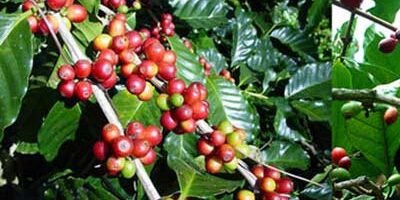Jamaican Coffee: From Farm to Cup – The Journey of a Global Treasure
Jamaican coffee isn’t just a drink—it’s a reputation. Especially when you’re talking about Jamaica Blue Mountain coffee, one of the most coveted beans on the planet. But what makes it so special? Let’s break it down from the roots in the soil to the final sip in your mug.
Where It Begins: The Mountains
The story starts in the Blue Mountains, an eastward range that cuts across four parishes in Jamaica. With elevations reaching over 7,000 feet and an ideal combination of mist, rainfall, rich soil, and moderate temperatures, this region creates a natural greenhouse for coffee. These high-altitude conditions slow down bean growth, allowing more time for sugars and flavors to develop.
Farmers here tend to small lots, often no larger than a few acres. These aren’t sprawling industrial farms. They’re family-run operations where beans are handpicked—yes, by hand—because only the ripest cherries make the cut.
Harvesting: Precision and Patience
Coffee harvesting in Jamaica happens between September and March. The process is labor-intensive. Workers hike up steep hillsides to reach plants scattered across rugged terrain. Cherries are picked selectively, often requiring multiple passes over the same plant during the season. Quality takes precedence over speed.
This attention to detail contributes to the high cost of Jamaican coffee. You’re not just paying for taste—you’re paying for labor, care, and tradition.
Processing: The Wet Method
Once picked, the cherries go through the “wet” or “washed” process. First, they’re depulped to remove the fruit flesh. Then the beans are fermented in water for 12 to 24 hours to strip away the mucilage. This is followed by washing and sun-drying, often on large concrete patios.
This method ensures a clean, bright flavor profile. It’s part of why Blue Mountain coffee is known for its mildness, smooth body, and lack of bitterness. Some describe the flavor as sweet with floral notes and hints of chocolate or citrus.
Quality Control: No Bean Left Behind
After drying, beans are hulled to remove the parchment layer. Then comes grading—one of the most rigorous systems in the coffee world. Beans are sorted by size, weight, and appearance. Any defects? They’re tossed out.
The Coffee Industry Board of Jamaica oversees this entire process. Only beans that meet their standards can be labeled “Jamaica Blue Mountain.” That certification matters, especially in a market flooded with knockoffs and blends that dilute the real thing.
Exporting the Gold
A large portion of Jamaica Blue Mountain coffee is exported—over 70%, with Japan being the biggest buyer. The beans are typically shipped in distinctive wooden barrels, not bags, another mark of quality and tradition.
But there’s a growing domestic appreciation for this coffee. Local cafés and roasters are reclaiming some of the best beans for Jamaicans to enjoy, helping build a stronger coffee culture at home.
From Cup to Culture
Drinking Jamaican coffee is more than a caffeine fix—it’s a cultural experience. Whether sipped black, with condensed milk, or infused into desserts and rum-based cocktails, it plays a role in everyday life and celebration alike.
The rise of coffee tourism is also making waves. Travelers are visiting estates to see the process firsthand, cup fresh brews on-site, and even take barista classes. It’s a move that connects people not just to the flavor, but to the faces and stories behind each cup.
Final Brew
Jamaican coffee, particularly Blue Mountain, isn’t just luxury—it’s legacy. It’s the result of generations of craftsmanship, unique climate conditions, and an uncompromising commitment to quality. From steep farms in the mountains to steaming cups around the world, the journey of Jamaican coffee is one that demands respect.
Next time you sip a cup, think beyond the taste. Think of the altitude, the hands that picked it, the rain that fed it, and the centuries-old pride behind every bean.









